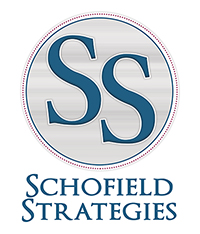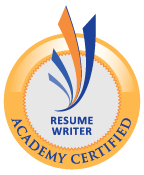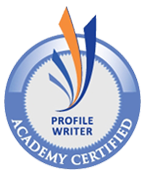LinkedIn is one of the most popular job search tools in use today. Many people who are on LinkedIn know the basics about completing their profile, but are often left with questions about how to make the best use of this social media platform. Below are the top four questions that Schofield Strategies receives regarding LinkedIn:
1. How valuable is the paid subscription if you’re not actively job searching?
Feature: You have a higher probability of showing up on the first page of a recruiter search.
Pro: Obviously, this is a good thing.
Con: If you have a well-written profile, you shouldn’t have to rely on this feature anyway. Participating with groups, discussions, and posts is an even better way to build your credentials and increase your visibility.
Feature: You can place a badge on your profile announcing that you are looking for a job.
Pro: This may make you more attractive to hiring managers.
Con: This may make you seem desperate. It is much more effective to have a strong headline and summary.
Feature: You can contact anyone through InMail.
Pro: This makes it easier to reach someone who is not immediately connected with you and can be helpful to reach out to hiring managers.
Con: Often a person’s contact information can be found within their profile or can easily be found with a little bit of research. Joining or following the same groups as another member can sometimes give you access to their InMail as well.
Feature: You can see who has viewed your profile.
Pro: This can be especially helpful if you want to know exactly who is looking at your profile by offering you metrics and profiles of viewers. However, the free version gives you basic information about views and statistics that should be sufficient for most job seekers.
Con: While this may seem like a great feature, LinkedIn is a tool for YOU to use in your job search. You should mostly be proactive, rather than reactive, by searching out other people and posts for new opportunities.
Still not decided? You can sign up for a 30-day free trial to test the waters, but most job seekers should be able to get enough out of the basic service.
2. How should you reach the right connections that could lead to future work/clients?
Research! Perform searches on people in your ideal industry, company, or location. The advanced search feature offers many options you can use to customize your search. Focus one day on a search for people in your industry that went to your same school and reach out to them for advice. Focus another search on people in your industry who live in your area and try to set up a meeting for an informational interview.
Join groups and follow companies! Following companies and groups is a great way to discover new opportunities and connections but participating is even better. Join at least five groups and check in weekly to follow the discussions and posts. Don’t be shy about jumping in and offering advice or resources that could be helpful to your fellow members. Then take the opportunity to share your own posts or questions for the group. This is by far the best way to “meet new people” on LinkedIn and can increase your profile views as well. Once you discover people with similar skills or backgrounds, invite them to connect on LinkedIn and continue to network with them.
A word of caution, however, DO NOT use the stock LinkedIn message when reaching out to your contacts. Always draft a short, personalized note in the message when you are trying to make a new connection. A personalized note is more memorable and more likely to generate a response when reaching out to someone, especially when you don’t know them.
3. Do people scroll down your profile?
In order for LinkedIn to consider your profile complete, you must have the following:
- Your industry and location
- An up-to-date current position with a description
- Two previous positions
- Education section
- Minimum of three skills listed
- Profile picture
- At least 50 connections
That being said, the three most important parts of your profile are the headline, your contact information, and your summary since that is usually the first thing people see on your profile.
Headline: This is the primary information about who you are that you are sharing with members. It is also the main field that will drive search results so make sure that it is up to date and specific.
Summary: You want your summary to address who you are, what you do, and why you stand out. Make sure you use key words within your industry to help search results.
Contact Information: Make sure that this information is updated, correct, and specific to how you want people to reach out to you.
If someone likes what they see or are interested in learning more about you, they will scroll down to the rest of your profile. Keep in mind that you can re-arrange each section by going to edit profile and then dragging the sections around. Experiment by moving the sections around to find the best configuration for your profile.
The best way to predict what someone else will do and like when they view your profile is to study your own viewing preferences. When you are conducting searches for contacts, take a minute to consider what you are seeing and then incorporate your favorite features into your own profile.
- Which profiles do you spend the most time viewing and why?
- Which profiles do you scroll down in and why?
- Which sections of the profiles you view are the most interesting and why?
4. What makes a standout summary?
You have 2000 characters to create a standout summary – you want to use those characters wisely. Your summary should clearly tell people:
- Who you are
- What you do
- What makes you stand out
Your LinkedIn summary is your first impression when someone reads your profile. Decide whether you will write it in first or third person. There are advantages to both – third person is more professional and first person is better at conveying passion and interest for your work. Choose a style that works for you to make sure your summary is engaging.
Show off your accomplishments. If someone is doing a search, you only have a few seconds to grab their attention before they move on to the next profile. Don’t waste your summary listing your main job responsibilities. Instead focus on your top skills, attributes and accomplishments. Are you the top sales earner in your office? Are you passionate and committed to your work? Tell your story in this section and offer specifics to paint a picture of who you are and how you can benefit a client or organization.
Once again, research other people’s summaries. Which summaries stand out the most and are the most interesting? Use what you learn and incorporate it into your own summary.
Finally, have a call to action at the end of your summary with your contact information. If you are accepting new clients, want to gain experience through volunteering, or are looking for work make sure to let people know.
The world of LinkedIn is a great environment for networking but can also feel overwhelming and endless. For more information on how to use LinkedIn effectively see “Optimizing LinkedIn® for Your Job Search – 50 Tips and Techniques to Develop and Expand Your Personal Brand”.
Note: This blog post only touches on certain aspects of this topic and is not a comprehensive list. This blog post is an educational and informational resource for job seekers and is not a substitute for working with a resume writer or other professional. See our Terms and Conditions for additional information.






Comments are closed.